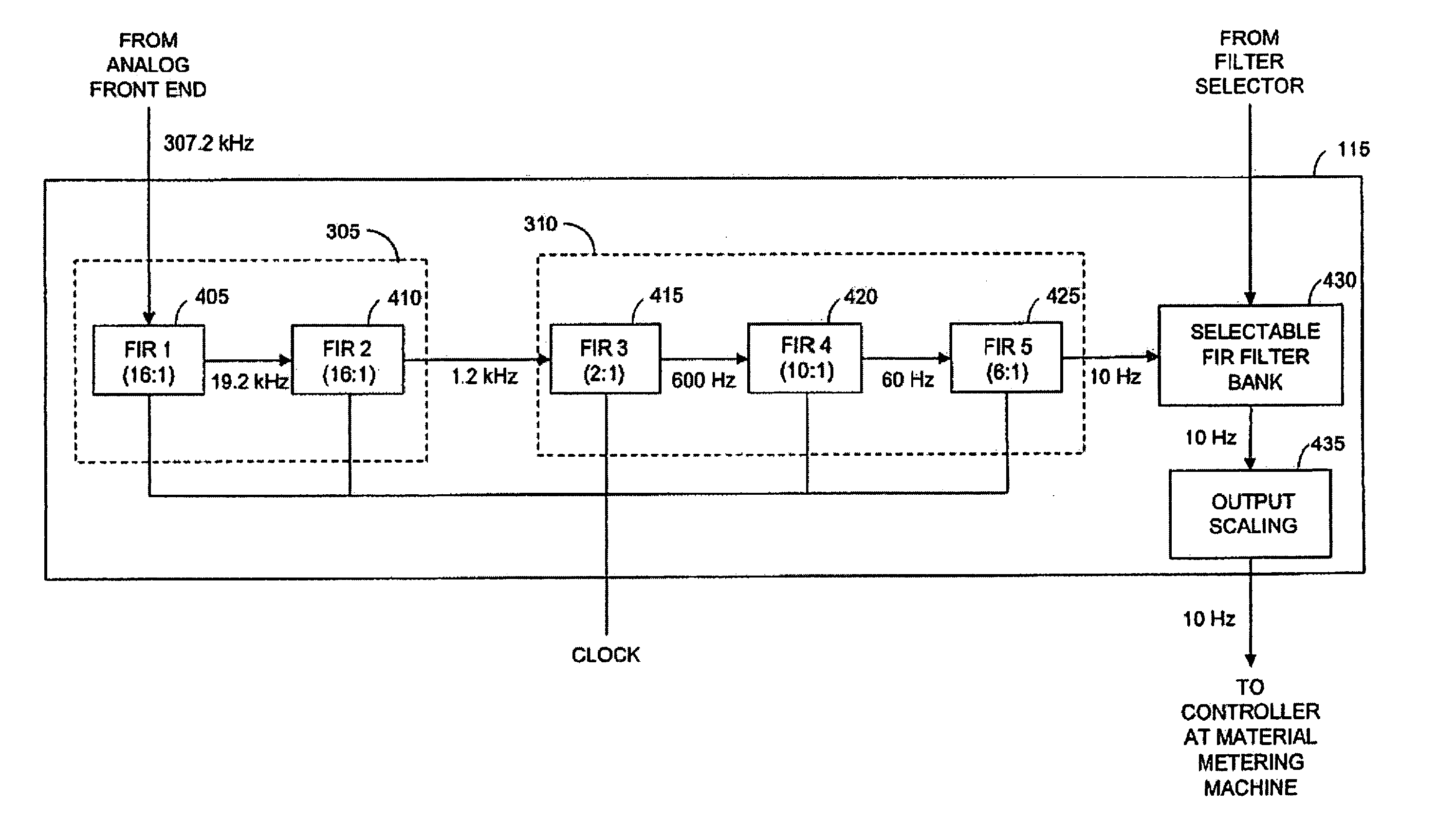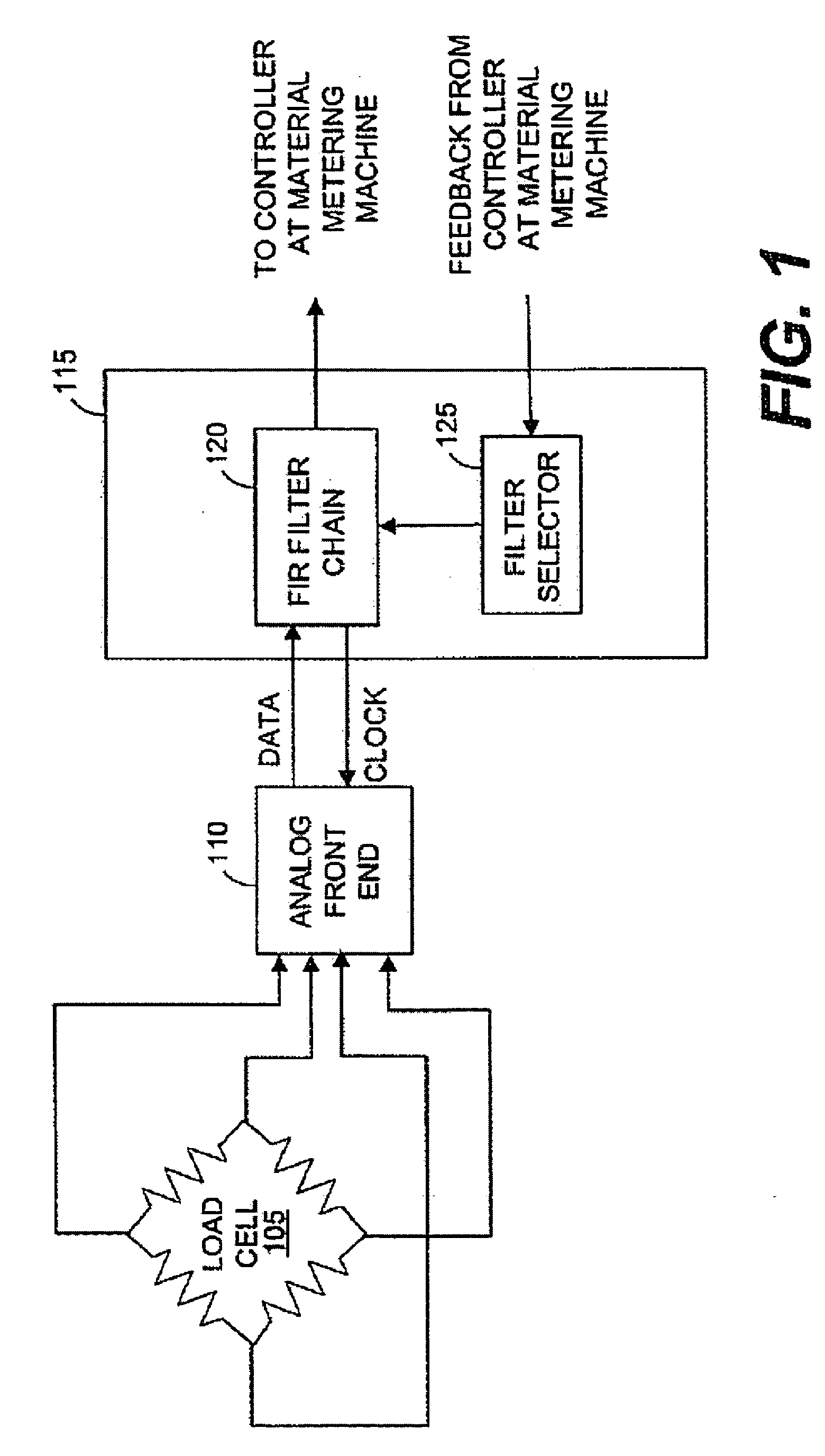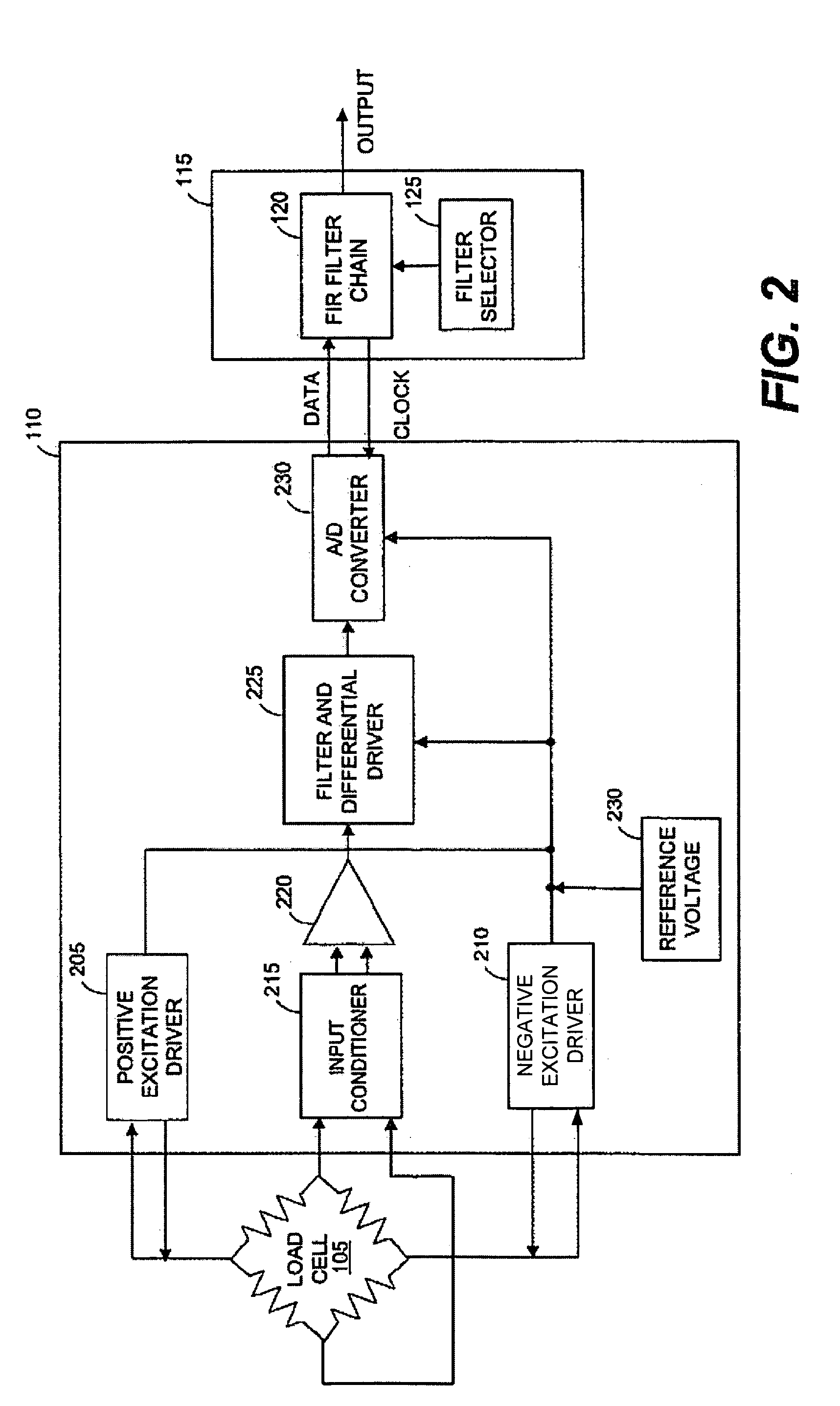Methods and systems for filtering unwanted noise in a material metering machine
a material metering machine and filtering method technology, applied in the field of decimation filters, can solve the problems of many sources of noise, electrical and mechanical, electrical noise, line noise, etc., and achieve the effects of reducing the sampling frequency of the digital signal, reducing the sampling frequency of the signal, and reducing the line noise in the signal
- Summary
- Abstract
- Description
- Claims
- Application Information
AI Technical Summary
Benefits of technology
Problems solved by technology
Method used
Image
Examples
Embodiment Construction
[0029] The operation of the digital filter bank begins when a load cell, also known as a strain gauge, connected to a material metering machine, receives an analog signal that is proportionate to a load placed on the load cell. A positive and negative excitation source drives the load cell, which generates an output voltage, which is proportional to the load. The output signal is a low voltage analog signal and is differential in nature. The low voltage analog signal is then fed to a digital signal processing (DSP) unit, which conditions the signal and converts it from an analog signal to a digital signal. The converted digital signal typically has a high sampling rate, normally about 307.2 kilohertz (kHz), which is within the operating range of the analog-to-digital (A / D) converter
[0030] The digital signal is input to a decimation filter bank that contains a number of individual decimation filters. In the exemplary embodiment, the decimation filter bank contains five (5) finite imp...
PUM
 Login to View More
Login to View More Abstract
Description
Claims
Application Information
 Login to View More
Login to View More - R&D
- Intellectual Property
- Life Sciences
- Materials
- Tech Scout
- Unparalleled Data Quality
- Higher Quality Content
- 60% Fewer Hallucinations
Browse by: Latest US Patents, China's latest patents, Technical Efficacy Thesaurus, Application Domain, Technology Topic, Popular Technical Reports.
© 2025 PatSnap. All rights reserved.Legal|Privacy policy|Modern Slavery Act Transparency Statement|Sitemap|About US| Contact US: help@patsnap.com



